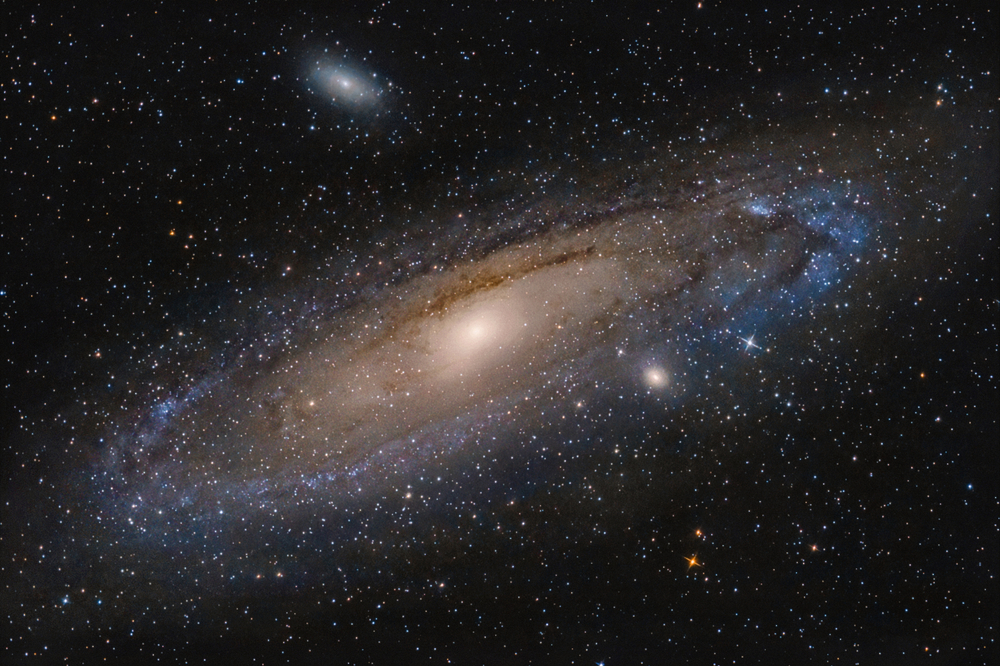Some Stars In Our Galaxy Came From Andromeda
Posted on Categories Discover Magazine

All the stars in our galaxy are moving relative to one another, usually at speeds no more than about 100 kilometers per second. Some stars move much faster, and a few have huge velocities, of the order of 1000 kilometers per second.
These hypervelocity stars have an interesting history. Astronomers believe these stars probably started life as one half of a binary system with one star then being captured by the powerful gravitational field of the supermassive black hole at the center of our galaxy with the other being flung away like a sling shot.
These stars have an interesting future too. Their speeds exceed the escape velocity of the Milky Way, so they will probably end up as lonely travelers in some dark corner of intergalactic space. But one or two may journey to more exotic locations, perhaps ending up in a distant dust cloud or even another galaxy.
And that raises an interesting possibility. The Milky Way’s sister galaxy, Andromeda, also has a supermassive black hole at its center, which will also be flinging stars away, some of them in our direction. Is it possible that such stars might have made it all the way to the Milky Way unscathed? And if so, how many of our galaxy’s stars might have been born in Andromeda?
Star Trek
Now we get an answer thanks to the work of Lukas Gülzow at the Karlsruhe Institute for Technology in Germany and colleagues who have simulated this star flinging process in Andromeda and the journey that stars would have to make to the Milky Way. Their results suggest that today, there may be as many as 4000 stars in the Milky Way that came from Andromeda.
At the heart of Gülzow and co’s work is the assumption that whatever happens to stars in our galaxy must also happen in Andromeda. So they study the distribution of star velocities in the Milky Way as measured by the Gaia space observatory and assume that star velocities in Andromeda must have a similar distribution.
They then create a computer model to simulate the way Andromeda generates stars with this velocity distribution with particular interest in the fraction that exceed the galactic escape velocity. They do this by assuming that Andromeda has the same mass as the Milky Way and in the case that Andromeda is twice as massive (nobody is quite sure).
The results make for fascinating reading. Of course, Andromeda flings stars in all directions so most do not come anywhere near the Milky Way. But some do.
Andromeda is some 2.5 million light years from here, so another factor is the travel time, a factor that depends on the gravitational pull of both Andromeda, the Milky Way and anything else on the way. That can create quite complex flight paths, But the researchers believe that stars ought to be able to make the journey within their typical lifespans.
So what would these stars look like, as seen from Earth? It turns out that they ought to be easily distinguishable from our own hypervelocity stars because they would be heading into the galactic center rather than away from it. Moreover, they will be coming from only one direction.
Lonely Travelers
But the team aren’t sure how many are likely to be visible. They say that in the worst-case scenario, at least ten of the hypervelocity stars in our galaxy should be from Andromeda. And in the best case, some 4000 of them should be. “While we expect the vast majority of hypervelocity stars in our galaxy will originate here, we expect the number of stars present from Andromeda at any one time to be between twelve and 3910,“ say Gülzow and co.
Indeed, they go even further and say it might be possible to detect individual candidates based on their velocity and trajectory orientation.
That doesn’t mean these stars will be visible from Earth, of course. Indeed, astronomers have so far only observed a tiny fraction of the hypervelocity stars that must exist in our galaxy and none of these are obvious candidates to have come from Andromeda. (Although one is thought to have originated in the Large Magellanic Cloud.)
Further observations are likely to reveal more candidates. And other types of data could help narrow down the candidates, such as information about the age of stars.
That’s interesting work suggesting that island universes, as galaxies were originally called, may not be so independent after all.
Ref: On Stellar Migration from the Andromeda Galaxy : arxiv.org/abs/2306.08143